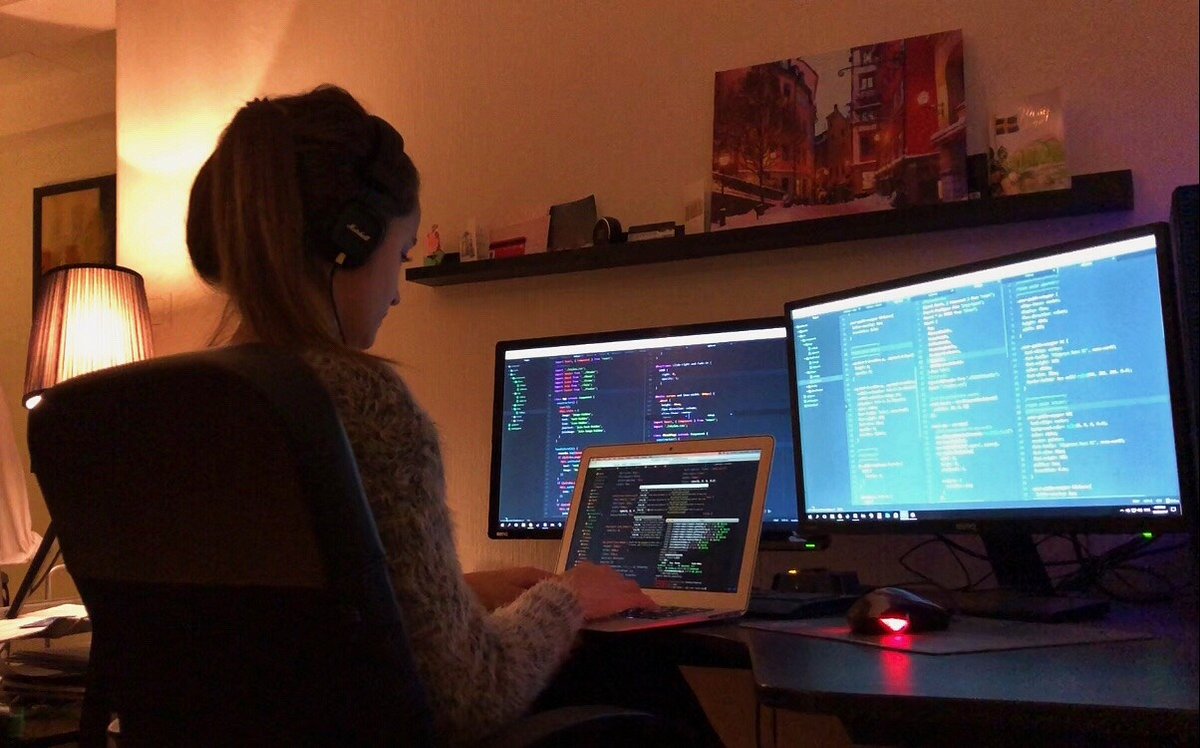Building Success with a Dedicated Development Team for Your Company Requirements
Wiki Article
Committed Developers vs. In-House Teams: Which Is Right for You?
The decision in between utilizing devoted designers and maintaining an internal team is a significant one that can influence the trajectory of your jobs and total business method. Devoted developers supply a level of flexibility and customized experience that can be beneficial for details, temporary initiatives. Conversely, internal groups contribute to a cohesive business culture and a nuanced understanding of long-lasting objectives. By checking out essential variables such as budget plan, project extent, and wanted control, you can better identify which approach aligns with your business demands. The implications of this option expand past immediate outcomes-- take into consideration the more comprehensive effect on your service landscape.Comprehending Dedicated Programmers
The expanding need for specialized skills in the tech sector has actually brought about the introduction of devoted developers as a feasible remedy for numerous organizations. These specialists are generally acquired on a project basis, enabling firms to utilize specific competence without the long-term commitment connected with full-time hires. Committed developers are commonly ingrained within a client's group, giving adaptability and scalability to satisfy task needs.This version enables organizations to access a worldwide talent pool, which is specifically useful in a swiftly advancing technical landscape. Dedicated programmers can be sourced from different geographical locations, ensuring that firms can locate the best capability at affordable rates. They frequently bring a wealth of experience and understanding, having functioned on varied tasks throughout different sectors.
Additionally, dedicated programmers can focus exclusively on the jobs at hand, boosting efficiency and performance. They are equipped to incorporate flawlessly right into existing operations, teaming up closely with internal teams to attain project purposes. This approach not only reduces the burden of employment and training however additionally enables organizations to remain dexterous, adjusting quickly to transforming market demands and technical improvements.
Advantages of In-House Teams

Additionally, in-house teams have a tendency to have a deeper understanding of the company's goal, values, and objectives. This alignment can boost employee involvement and inspiration, as employee really feel a lot more linked to their job and the organization's success. Additionally, having a dedicated internal group permits for much better placement of strategies and goals, as these members are continually concentrated on the company's concerns.
Internal teams also help with quicker decision-making processes, as they can respond a lot more quickly to challenges and changes. The well-known connections and experience with company protocols permit streamlined process and lowered miscommunication. Eventually, the combination of a cohesive culture, positioning with organizational objectives, and reliable interaction makes in-house teams an important possession for several organizations, especially those seeking to grow long-lasting development and innovation.
Expense Considerations
When examining price factors to consider, both specialized designers and internal teams present unique monetary effects for organizations. Engaging devoted programmers generally includes a pay-per-project or per hour price model, which can be affordable for companies with rising and fall task demands. This method allows for adaptability in scaling resources up or down, making certain that firms just spend for the solutions they require.In comparison, in-house teams involve fixed costs, including wages, advantages, and overhead expenses such as workplace and equipment. While this version supplies higher control and instant schedule of sources, it might bring about higher lasting costs, specifically if the work does not justify a full-time personnel.
Furthermore, firms need to consider the surprise prices connected with employment and training of internal employees, which can additionally strain spending plans. Sometimes, the time and resources invested in handling an in-house group can interfere with the company's core business goals.

Job Monitoring and Flexibility
Job monitoring and adaptability are essential aspects that affect the option in between in-house groups and dedicated designers. Committed teams typically have established processes for taking care of projects properly, leveraging specific methodologies like Agile or Scrum, which help with repetitive progression and adaptability.
Ultimately, the choice between internal groups and committed designers depends upon the desired degree of adaptability and the particular job management requirements. Business should review their operational dynamics, job complexity, and resource schedule to identify which option lines up finest with their critical objectives.
Making the Right Choice
Picking the ideal growth method-- devoted developers or internal teams-- needs a cautious evaluation of different factors that align with a business's tactical goals. dedicated development team. Initially, take into consideration the nature of the project. If it requires specialized skills or a quick scale-up, committed designers may be better. Conversely, software development staff augmentation in-house teams can supply far better continuity and combination with existing employees.Next, review your budget plan. Dedicated programmers frequently offer an economical remedy for short-term tasks, while internal groups may sustain higher long-lasting expenditures due to wages, benefits, and expenses expenses. Examine the degree of control and cooperation preferred; internal teams usually cultivate stronger communication and placement with business culture.
If prompt outcomes are essential, specialized designers can be onboarded quickly, whereas developing an in-house team takes time for recruitment and training. If continuous growth is crucial, spending in an internal team may generate much better returns over time.
Conclusion
In final thought, the decision between in-house teams and committed developers hinges on project demands and organizational objectives. Conversely, internal teams cultivate a cohesive culture and much deeper alignment with long-term objectives.The choice between making use of committed developers and maintaining an internal group is a substantial one that can affect the trajectory of your projects and overall business method.Task management and adaptability are important factors that influence the selection between committed developers and internal teams. software engineering staffing.In contrast, in-house groups might succeed in keeping a regular job management framework due to their familiarity with the organization's society and long-term objectives. Devoted designers frequently offer a cost-effective service for temporary jobs, while internal teams may incur higher lasting expenses due to salaries, benefits, and overhead prices.In verdict, the choice in between in-house teams and devoted developers hinges on job requirements and organizational goals
Report this wiki page